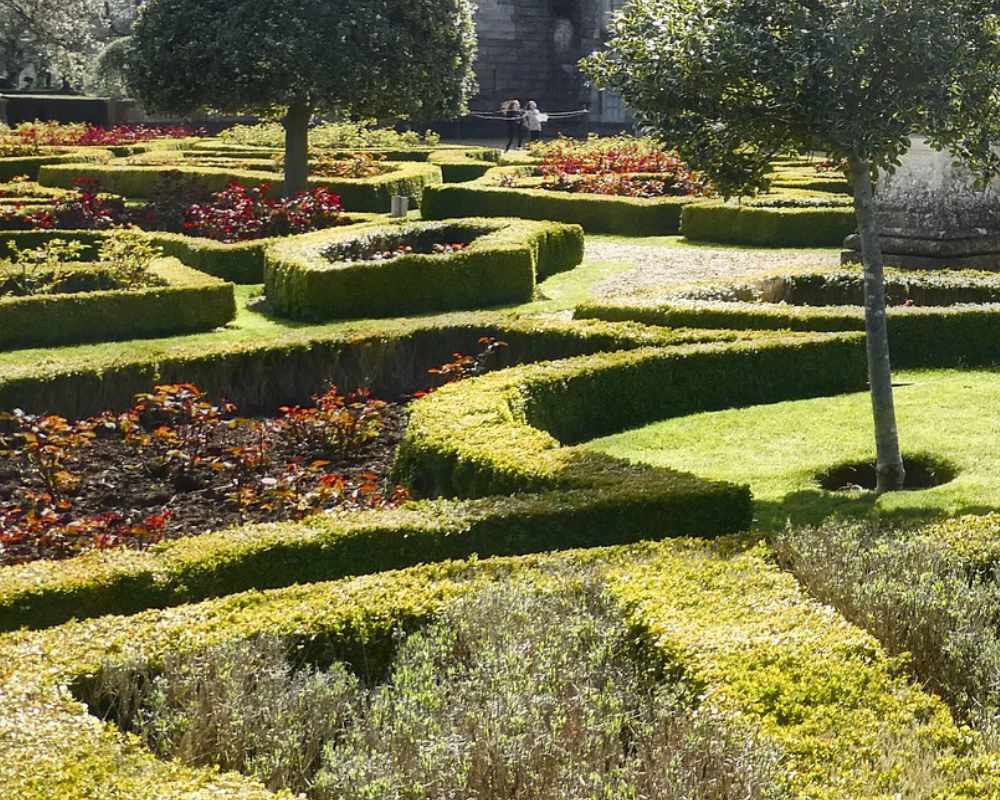At our Monday meeting, Claire Tatler M. Hort shared details of her professional experiences “Gardening in Historic Places”, a talk not so much about garden design, but how the activities of the properties themselves, determined the way in which she planned and executed her work. An opportunity presented enabling her to start a new career in her much-loved interest, and she completed a 3-year Master’s Degree with her thesis on ‘Control of Himalayan Balsam’ winning her the Chitterden Memorial Award.
Claire explained the four main scenarios which governed the presentation of historic properties:
- totally private
- private, but used for business and income generation
- The National Trust
- a professional gardener having total responsibility for planning and working a site.
Claire joined Combermere Abbey, a privately-owned, five-acre walled garden near Whitchurch, as a trainee gardener. The historic site has been developed as a business offering licensed, very high-end weddings and associated celebrations. Weddings were in Spring and Summer, Autumn was the time for engagement parties, and the New Year into Winter was for marketing and promotional events for future weddings business, usually two years in advance. Therefore, at any time, the gardens had to be immaculate, achieved through the co-operation and professionalism of a dedicated team, working together. So, NO downtime!
The constraints on planning turned the normal calendar on its head: mulching in winter, pruning apples out of season, rushing or delaying growth of flowers for dressing the ceremony rooms. The choice of flowers grown was governed by their use, apart from their beauty and colour and their role in companion planting: could they serve a dual purpose? would they hide some bare earth or a patch of failed planting? And, very importantly, they had to be low maintenance.
The structural and architectural planting was always designed with an eye to photography with geometric layouts and topiary all created to help capture stunning wedding memories. And always the grass, gravel, paths, hedges, topiary and borders had to be immaculate and weed-free.
Claire then moved to a private Hall in Ludlow, in charge of a seven-acre site of walled garden and flower borders. The family preferred to adopt a ‘hands-off’ approach, only asking for cut flowers for the Hall, but as soon as Claire’s work evolved, so the family’s interest increased. The neglected two-acre wild flower area was brought back to life as a result of the owner’s wish to view it from the upper levels of the Hall.
From Ludlow, Claire joined the mighty National Trust, where the ethos is conservation, visitors’ experiences and the ‘spirit’ and history of the historic site. She began working at The Weir Garden in Hereford, an SSSI, where Time Team had discovered an Iron Age settlement and signs of Roman occupation. The house itself remains private, but the 1799 Humphrey Repton Garden ranging alongside the River Wye and prone to periodic flooding, was neglected and in need of attention at a basic level. The soil was poor, the planting overgrown and narrow in scope, with dense nettles and brambles covering the hillsides. There appeared to be very few signs of the historic Repton design to guide the renovation so the work put in place followed the ethos of the National Trust – the ‘spirit’. The overgrowth was cleared, and the trees were sympathetically pruned, tops reduced and undergrowth raised to reclaim the impressive views of the river, with grassed picnic areas made available for visitors to relax by the riverside.
A large rockery with pool was uncovered when the overgrowth was removed. What planting there had been had disappeared, and there appeared to be very little soil remaining amongst the rocks. The rockery was reloaded with soil and planted with large alpines and when Claire left this site, the pool had been taken over by newts and frogs. From Hereford, Claire moved to Woollerton Old Hall, near Market Drayton, a nine-acre private garden, and we look forward to hearing about that when she visits us again later in the year.

